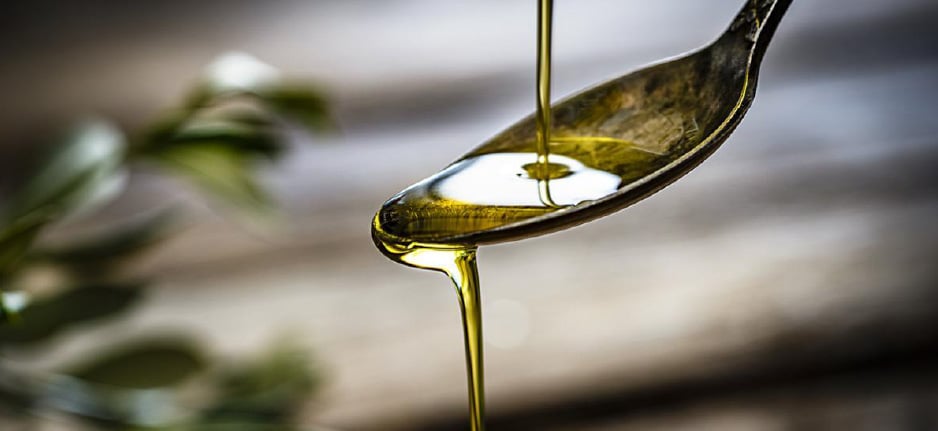When it comes to making your own edibles, there are a few different ways medical cannabis patients can infuse their meals with cannabis. If you’ve already read our blogs on how to make cannabutter and have carefully avoided the most common edible cooking mistakes, you may be ready to take it up a notch and try something new. Cannabutter may be every professional edible chef’s biggest staple, but did you know that you can use medical cannabis-infused oil in the kitchen, too?
Before we dive into cannaoil, let’s discuss the pros and cons of cannabutter vs cannabis-infused oil, or canna oil. Please note: making canna oil and accurately dosing it requires experience, so if you’re unsure about dosing please contact a trusted medical cannabis professional.
Cannabutter
Cannabutter is the backbone of cannabis-infused brownies, cakes, and cookies, and is made by extracting cannabinoids and other compounds from the flower into the butter. Cannabutter is where most beginners start their homemade edible journey, as it complements both sweet and savory dishes.
It’s easy to make (you can even make it in an Instant Pot), relatively inexpensive, and its high fat content supports most cooking methods. With that in mind it does have some limitations, and some patients prefer making canna oil instead due to these limitations.
Disadvantages of cannabutter
The main downside of cannabutter is its fat and dairy content. If you’re watching your fat intake, are monitoring your cholesterol, or are focusing on living a plant-based lifestyle, cannabutter simply isn’t an option. Butter also has a low smoke point, which is not ideal for every recipe. Fortunately, there is another option: medical cannabis-infused oil made from olive oil, coconut oil, or avocado oils.
Cannabis-infused oils
For the sake of this article, we'll focus on cannabis-infused oil that uses olive oil, since olive oil is one of the healthiest oils and can be purchased everywhere. Olive oil on its own also has some health benefits: it’s rich in monounsaturated fats and antioxidants and hasn’t been associated with weight gain, like some other common cooking fats. Plus, unlike coconut or avocado oils, olive oil has more price options, meaning you can find a quality olive oil that will still fit into your household grocery budget.
Disadvantages of canna oil
There is really only one main disadvantage of making canna oil that uses olive oil as the base: the strong flavor profile of olive oil doesn’t always pair well with some dishes, such as cupcakes or other sweet recipes. The other disadvantage is that “nicer” olive oil can be pricey but, as mentioned above, there is enough variety on the market to make it easy to find a quality version that still fits your budget.
What other oils can you use?
Olive oil and butter aren’t your only options when it comes to making canna oil and homemade edibles. Depending on your time, budget, and ability to access these oils, you may also want to consider making canna oil from these oils:
- Avocado oil - rich in antioxidants; contains omega-9 fatty acids
- Walnut oil - nutty flavor goes well in salads and pestos; may help decrease LDL cholesterol levels
- Coconut oil - may boost heart health; is relatively easy to find
- Rapeseed oil - high smoke point; most rapeseed oil is non-GMO; low in saturated fats
Ultimately, any type of oil can be infused with cannabis. It’s just a matter of finding an oil, finding a recipe for infusing it with cannabis, and incorporating it into the food you already make at home.
CBD oil vs cannabis oil
This is where it can get confusing. CBD oil is not the same as cannabis oil or canna oil. CBD oil does not contain any THC -- meaning it doesn’t have any of the psychoactive effects of THC/cannabis. If you’d like to make your own canna oil but want to avoid the psychoactive effects of medical cannabis, you can always purchase cannabis flower that’s high in CBD and low in THC. Then, use that cannabis as you would any other cannabis in a cannabutter or canna oil recipe.
And, then there’s hemp oil, which contains neither THC or CBD. It’s widely used for all kinds of products, from soaps to supplements, but isn’t usually used for cooking.
Which kind of oil should I use?
Thinking about making canna oil at home but aren’t sure which oil to use? In addition to the above considerations, there are a couple other things to think about:
- Flavor- as mentioned, some oils (like olive oils) are best used for savory dishes. If you’re looking for a multi-purpose cannabis-infused oil that you can use in sweet and savory dishes, consider using something more neutral, like a coconut oil.
- Texture- before making a canna oil, think about the types of dishes you’ll primarily be using the oil in and consider the “mouthfeel.” Butter and ghee have thicker textures, while oils don’t.
To learn more about all the different kinds of cooking oils, click here.
Leave it to the pros
Let’s face it: cooking with cannabis can be tough, especially if you’re not a whiz in the kitchen to begin with. Not only do you have to think about smoke points and flavor profiles, but you also have to worry about making canna oil or cannabutter to begin with. If you’d like to try an edible but aren’t confident that you can make one yourself, or have questions about dosing, head to our flagship dispensary in Baltimore to discuss our selection of professionally-made edibles with one of our patient coordinators. They are ready to help!
Want to learn more about medical cannabis edibles? Read Edibles 101: A Beginner’s Guide to Cannabis Edibles.



